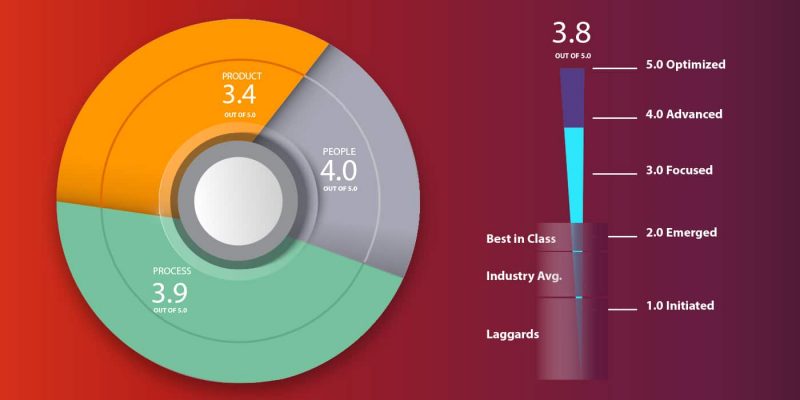
Use cases allow us to define the value of any technology outside of its intrinsic value. We read and write use cases every day to know what can be done with a platform and realize its value.
These are crucial to decision-makers and users alike when there is a lot of hype surrounding new tech. Potential is often what’s marketed, but no marketer or business wants to invest in potential alone. We want to know what a platform or an application is capable of before going all-in on one. Enter “Use Cases”.
Read more about Adobe Real-Time Customer Data Platform- The Latest Experience Management Solution.
This new technology might seem too good to be true. So, instead of relying on the marketing points and articles singing the praises of utilizing a CDP, let’s look at a market leader’s – Adobe Real-Time Customer Data Platform (RT-CDP) – use cases before assuming its value in your businesses.
What Is Adobe RT-CDP?
Adobe introduced a new CDP as a revolutionary platform capable of streamlining customer data management, collection, and activation. How? With the help of some awesome capabilities, of course.
Adobe promises better data-driven decision-making capabilities when using Adobe Real-Time CDP. You can harness the full potential of this new technology, and any other, if you know where to start and have a vision for where you are going. First, assess your digital marketing maturity level; then improve upon it by prioritizing investments based on use cases.
What Is Digital Marketing Maturity?
Digital Maturity (or Digital Marketing Maturity) is measured as the capacity to deliver seamless experiences to your customers across all channels with continuous progress. The digital maturity model is based on the analysis of data, how well you are taking advantage of a digital marketing strategy and campaigns.
It is usually broken down into five distinct levels – Initial, Emerged, Focused, Advanced, and Optimized.

An organization that is focused on advancing their strategies and practices tend to score higher digital maturities and are referred to as Optimized or Level 5. They are usually capable of delivering connected and contextualized customer experiences through a data-driven strategic approach and out-of-the-box mobile experiences. Those struggling with data management and delivering personalized content are found in the lower tiers, like Initial or Emerged.
Your position within these 5 tiers depends entirely on the follow-through taken with data ingestion and manipulation, including the tools and analytics used to do these things. Identify your own organization’s digital maturity level and take a look at the use cases below to see how RT-CDP can promote continuous growth and help you reach the next stage.
Five Adobe RT-CDP Use Case Pillars
Use cases describe how products or services help users achieve a set of goals. Taking a use-case-driven approach to inform investments, like purchasing or upgrading a CDP, can bring to light both existing and potential conflicts and their solutions. Instead of getting caught up in granular CDP spec comparisons, focus on bigger picture capabilities and goals.
Here are 5 of the most useful Adobe RT-CDP use case pillars to get you started:
- Cross-Channel Audience Management
Streaming Data Collection Across Channels
Browsers are vital to consumer interactions, making web analytics an essential focus for marketers. However, the shift toward mobile devices and other connected devices has complicated this, creating even more touchpoints and tracking opportunities.
Many consumers have a preferred method of communication, browser, and device, so marketers should pay attention to all of these and make sure a clear view of customer preferences is created for each contact in their database. So how can you possibly keep all data gathered from desktops, tablets, and mobile apps straight?
Adobe Experience Platform, on which RT-CDP is built, collects data from various sources and apps and delivers it to all applications. Customer journeys are pieced together over time and visible within RT-CDP. With a complete view of the customer journey, marketers don’t rely on “last click” attribution. Instead, they can test and integrate new tools to attribute weight to each interaction. Customer data platforms also track the long-term performance of customers acquired through advertising by associating campaign membership with full lifecycle events and attributes with acquisition sources.
Resolving Customer Identities
With so much data coming in, it’s common for unchecked systems to overwrite existing information, create duplicates, and mistakenly associate incorrect details with contacts. The more complex systems you use, the higher the likelihood of finding inaccurate information in databases.
Real-Time CDP doesn’t rely on personal identifiers alone to track and build customer profiles. Current and historical data is used in conjunction with first-party data to create extensive customer profiles. Anonymous actions are associated with known customers, too, resolving the issue of anonymous profiles and activities for enhanced personalization and targeting opportunities.
- Onsite and Offsite Personalization
Take Segmentation to the Next Level
As RT-CDP collects and stores data from multiple sources, it enables marketers to identify the most relevant content or most appropriate offers for their customers. Based on relevant customer profiles and preferences, RT-CDP applies rule-based and advanced sequential segmentation to boost marketing campaigns. RT-CDP offers the Segmentation service that simplifies dividing customers into smaller groups with similar traits. For instance, say you want to target all those customers who searched for a particular product in the past 30 days but didn’t make a purchase in your upcoming marketing campaigns. The segmentation feature makes quick work of identifying your audience based on these parameters.
AI-Powered Next-Gen Data Management
Modern, successful marketing is all about predicting what your customers want. Understanding customer needs, desires, and problems are of utmost importance to teams developing greater brand loyalty. RT-CDP includes Customer AI, a feature that predicts what a customer will do and why. View influential factors and propensity scores to create detailed segments and optimize customer profiles. An artificial intelligence-enabled CDP solution like RT-CDP allows for preemptive actions creating better customer interactions.
For instance, if a person comes to your site to buy a sofa set, you predict its likelihood. Maybe your customer is delaying purchasing a sofa set but is moved to buy after seeing targeted ads and offers.
Organically make significant impacts on customer decisions with RT-CDP.
- Amplify Retargeting/Remarketing Campaigns
Gone are the days of retargeting ads or mail taking 12-24 hours after a cart is abandoned to be delivered to customers. An abandoned cart turns into a lost opportunity if you don’t entice customers to return or eliminate what caused their departure in the first place. The lost sales revenue from this situation equates to $18 billion eCommerce brands are missing out on.
Enable real-time and onsite retargeting or remarketing campaigns along with cross-channel advertising using Adobe CDP’s streaming segmentation capabilities. Adobe RT-CDP solution helps manage retargeting ads and emails based on customer behaviors, like abandoned carts. Deliver precisely what customers want, when they want it.
Finding a balance with remarketing campaigns is crucial, too, since many nudges can annoy customers and leave a bad taste in their mouths. With RT-CDP, easily set up frequency capping across channels, limiting the number of times an ad is displayed for a customer.
- Privacy and Data Governance
RT-CDP brings data from multiple sources to be used across various destinations, all with their own set of data usage policies to abide by. Since RT-CDP is built on top of the Adobe Experience Platform, advanced data privacy services are built-in, ensuring all users are compliant across the board. This application also uses the Data Usage labeling and Enforcement (DULE) framework to determine how data should be shared across various destinations. For instance, you can restrict activation of a particular segment (such as any partner) across display advertisements for an eCommerce company. - Optimize display media or inventory
Strategically benefit from this RT-CDP, no matter your role. You can optimize the number of impressions, media suppressions, and increase CPM as it adds sufficient metadata into segments. Earlier, DMPs were used for this purpose based on 3rd party cookies, on the other hand, Adobe RT-CDP involves people-based IDs and 2nd party partnerships.
Final Words
Using use case pillars specific to your industry and products for RT-CDP is the best way to realize its value within your organization. Here we have included the most common use cases; however, there are many more use cases for RT-CDP. Have something specific in mind? Let us know.
An experienced Adobe RT-CDP expert can go over your needs, goals, and current limitations to create detailed use cases and help pinpoint the right solution for you. Make every investment an opportunity.
If you are still unsure whether the Adobe RT-CDP solution is right for you, contact NextRow Digital to get a clear picture of your requirements and all possible solutions. Let’s build a true omnichannel vision of your customer’s interaction with your brand with us. Contact us at +1-847-592-2920 or marketing@nextrow.com.

